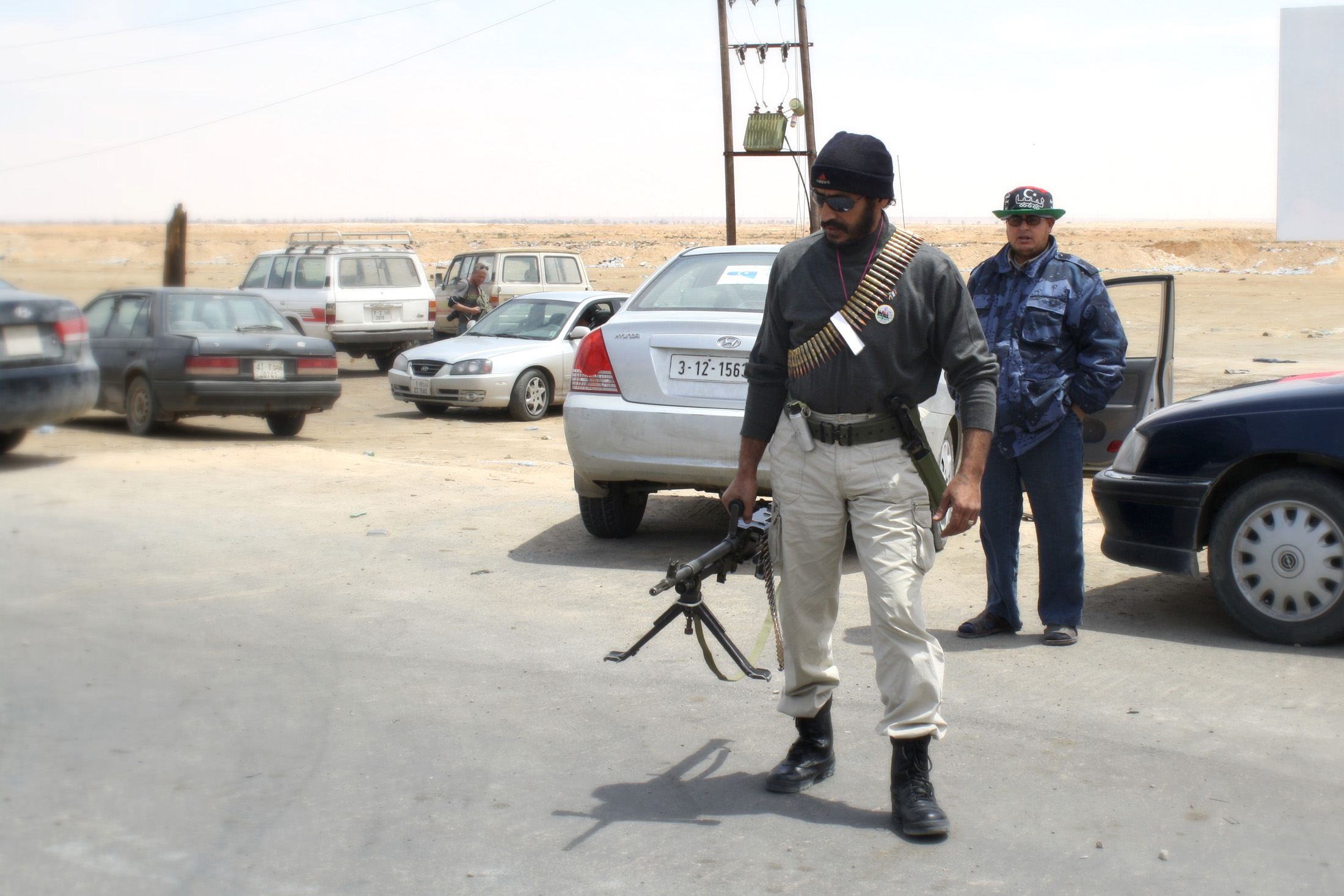On 9 June, UN Secretary-General Ban Ki-moon warned: "There is no quick fix to the crisis; the problem will not end quickly". He noted the findings of a commission of inquiry which detailed crimes committed by government forces, including murder, unlawful imprisonment, enforced disappearance and sexual abuse, as well as torture and other forms of cruel, inhuman or degrading treatment committed by opposition forces.
Below is a timeline of events since 4 April. Also see timeline of key events from February to early April.
4 April: Unexploded ordnance (UXO) disposal experts arrive in eastern Libya to begin clearance activities.
6 April: Boat of migrants attempting to reach Italy from Libya capsizes with up to 250 missing.
8 April: Organization of Islamic Conference begins repatriations at Tunisian border.
10 April: Increase in violence in mountain region of western Libya. ICRC reports a large number of stranded migrants in Misrata.
11 April: World Health Organization highlights deteriorating health situation in Misrata and calls for assistance to immediately evacuate injured.
12 April: International Organization of Migration (IOM) begins to evacuate people from Misrata by boat.
13 April: Reports of thousands of West African migrants fleeing across the Libyan border with Niger. EU aid body ECHO increases aid to Libya by a further 10 million euros. Hospitals in Benghazi overwhelmed treating war-wounded.
15 April: Human Rights Watch (HRW) reports use of cluster munitions in Misrata. Telecom Sans Frontières set up satellite communications in Benghazi.
16 April: Médecins Sans Frontières (MSF) carries out second boat evacuation from Misrata of those with serious injuries. Mine Action Group find a large amount of unexploded ordinance in Ajdabiya, and Handicap International begins work on risk awareness for local populations.
18 April: UN and Tripoli agree a UN presence in the Libyan capital. DanChurchAid begins mine clearance activities in Libya. Some NGOs call on the UN to record all civilian casualties in the conflict. ICRC, with support from the Libya Red Crescent, evacuates casualties by boat from Misrata.
20 April: First refugees from Libya evacuated to Romania pending resettlement.
21 April: UN expresses concerns over rape and sexual violence in Libya. Save the Children receives reports of rape from the east. Amnesty International raises concerns about the humanitarian situation of those who have fled to Lampedusa, Italy.
3 May: Health clinics in Misrata desperately require support. IOM boat on its sixth trip from Benghazi is waiting since the 30 April for permission to dock in Misrata. There has been an increase in the number of new arrivals from the west of Libya and an increase in boats travelling to Italy.
6 May: Desperate migrants continue to take unseaworthy vessels to cross the Mediterranean to flee Libya and many are drowning.
16 May: International Criminal Court issues arrest warrants against Muammar Abu Minya Gaddafi, Saif Al Islam Gaddafi and Head of Intelligence Abdullah Al Sanousi from crimes against humanity committed in Libya since February 2011.
18 May: UN launches revised regional flash appeal for US$408 million for assistance to people affected by the Libya crisis.
25 May: Tensions increase at Choucha camp in Tunisia (near Libyan border). Four die in a fire in the camp which destroys 21 tents; further unrest damages 3,000 tents.
30 May: Qatar opens camp in Tunisia for Libyan refugees. South Africa’s President Zuma attempts to broker a ceasefire agreement in Tripoli.
31 May: A five-day inter-agency mission to Tripoli also visits Homs, Zlintan and Gharyan to assess humanitarian needs and discuss humanitarian access.
1 June: NATO extends mission in Libya by a further 90 days.
3 June: At least 150 migrants die on boat heading to Lampedusa, Italy. IOM team assists migrants stranded in Chadian desert. Inter-agency mission returns from Misrata where widespread infrastructure damage was witnessed.
5 June: UK Foreign Secretary William Hague and Secretary of State for International Development Andrew Mitchell travel to Benghazi to meet NTC. HRW says Libyan opposition authorities are arbitrarily detaining some civilians suspected of involvement in activities in support of Gaddafi.
7 June: 25,000 Chadians reported stranded near southwestern town of Gatroum. There are an estimated 8,000-10,000 Malians and thousands of Egyptians in the southwestern towns of Sabha, Gadames, Ubari and Murzuk. IOM reporting large numbers of Filipino and African migrant workers living at two sites in Tripoli.
10 June: Interagency mission to Ajdabiya finds no outstanding humanitarian needs.
hh/cb
Sources:
www.maginternational.org
http://blogs.redcross.org.uk/
www.reuters.com
http://reliefweb.int/
www.trust.org
www.hrw.org
www.msf-me.org
www.un.org
www.danchurchaid.org
www.icc-cpi.int
www.bbc.co.uk
This article was produced by IRIN News while it was part of the United Nations Office for the Coordination of Humanitarian Affairs. Please send queries on copyright or liability to the UN. For more information: https://shop.un.org/rights-permissions





